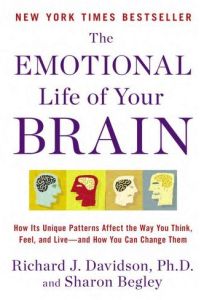Join getAbstract to access the summary!

Join getAbstract to access the summary!
Richard J. Davidson and Sharon Begley
The Emotional Life of Your Brain
How Its Unique Patterns Affect the Way You Think, Feel, and Live – and How You Can Change Them
Plume, 2012
What's inside?
Is your “Emotional Style” helping or hindering you?
Recommendation
Neurologist Richard Davidson and science writer Sharon Begley explain the fascinating, paradigm-shifting theory of “Emotional Style” that Davidson developed over 35 years of meticulous research. They reduce a welter of psychological profiles into a rubric of six dimensions that make up each individual’s emotional profile. They base these dimensions on neurological behaviors – specific brain patterns that individuals can change with mental training. If you’re tired of being pessimistic, for example, mental training can help you deliberately nudge your “outlook” closer to the “positive” end of the spectrum. Several self-tests help you figure out your emotional style and decide what – if anything – you want to do about it. getAbstract recommends this readable account of how to understand the brain-based factors affecting your emotional makeup and personality.
Summary
About the Authors
Richard J. Davidson teaches psychology and psychiatry at the University of Wisconsin-Madison and founded the Center for Investigating Healthy Minds. He directs the W.M. Keck Laboratory for Functional Brain Imaging and Behavior. Sharon Begley is Reuters’ senior health and science correspondent and the author of the book Train Your Mind, Change Your Brain.





















Comment on this summary